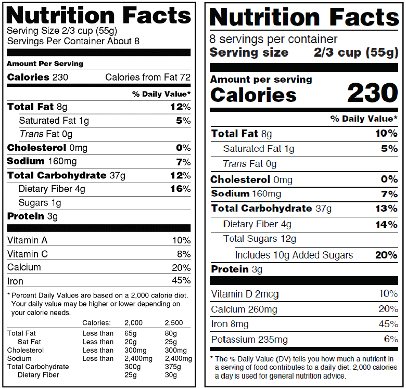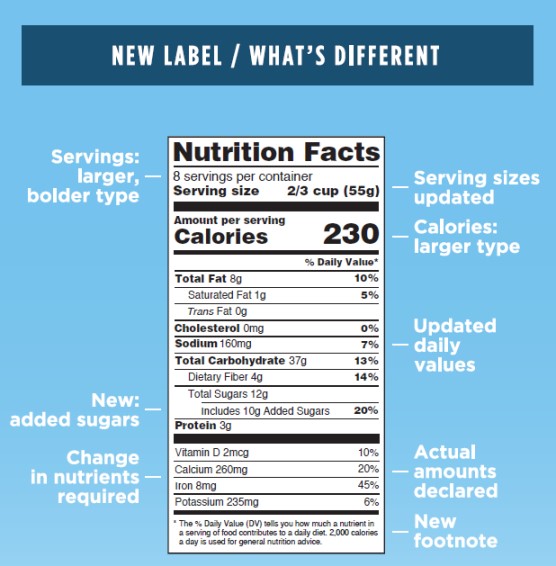Reading Nutrition Facts 101

- The first thing you should look at are the serving size and servings per container. The most updated label will have the serving size based on the amount that people usually eat–not what they should eat. For example: A serving size for soda used to be 8 oz but is now 12 oz because that is what the general public consumes.
- Next down the line is the amount of calories. This font is bold and larger than everything else on the label. It is recommended that you choose low calorie snacks with higher protein and less fat content. Notice that “calories from fat” has been removed because studies show that the type of fat is more significant than the amount. Keep these measurements in mind
- Low calorie < 100 cal
- Moderate calorie 100-350 cal
- High calorie >400 cal
- Aim for products that have < 10% saturated fats.
- The next things listed will have a % daily value. The "% Daily Value" tells you how much a nutrient in a serving of food contributes to a daily diet. 2,000 calories a day is used for general nutrition advice. The % Daily Values are a reference amount of nutrients that one should consume or not exceed during our typical diet throughout the day.

- You can see total sugars and added sugars right here. The “added sugars” is new to the nutrition label! Recent scientific data shows that it is difficult to meet nutrient needs while staying within calorie limits if you are not to consume more than 10% of your calories from added sugars. So this is something you want to keep an eye out every time you look at a nutrition label.
- Lastly, in the last section you will see a list of certain nutrients. Vitamin D, calcium, iron, and potassium are the ones required to be declared on the food label. This is because studies show that people struggle with having enough of these in their diet. Any other listed nutrients are optional for the companies.